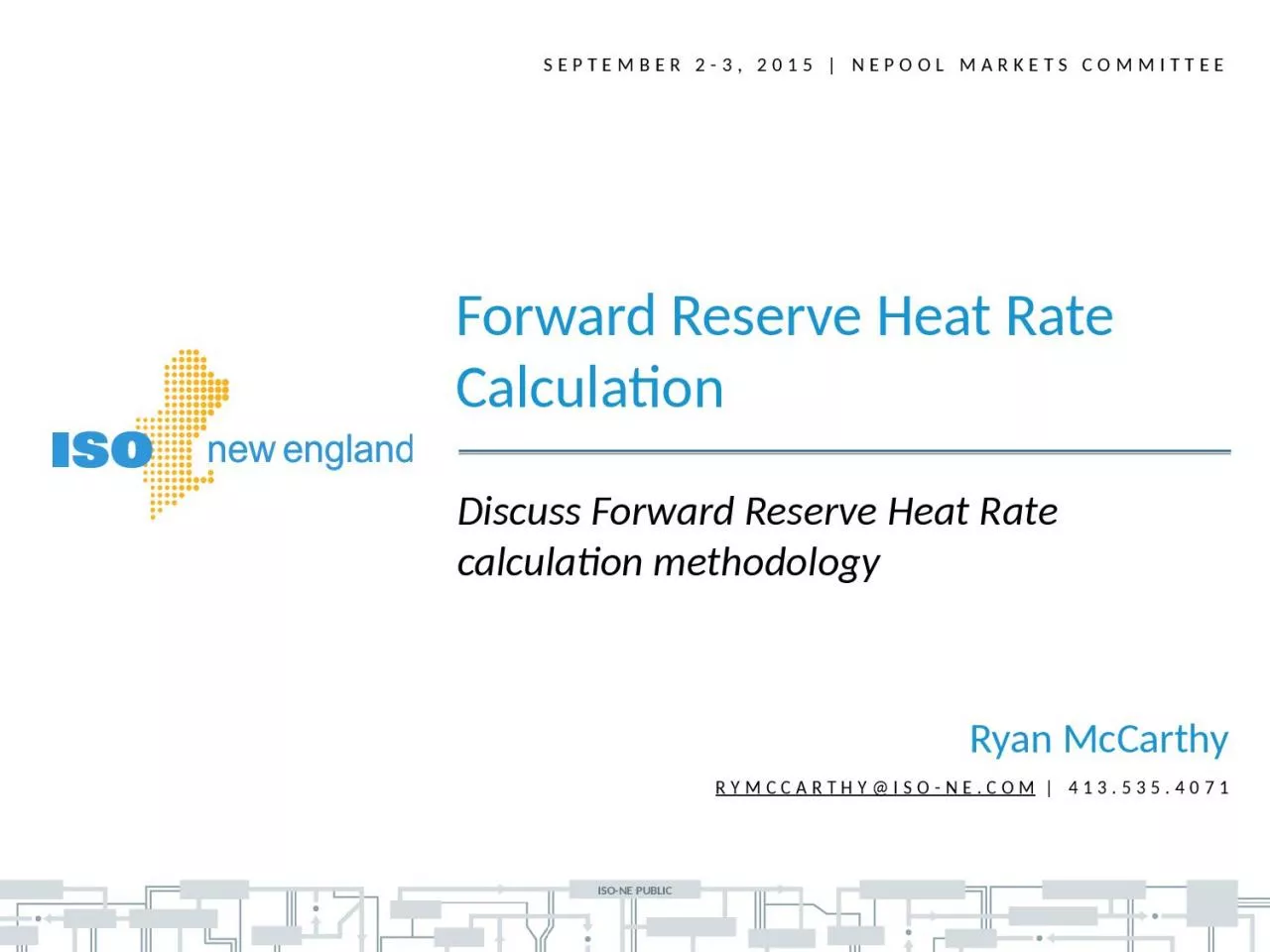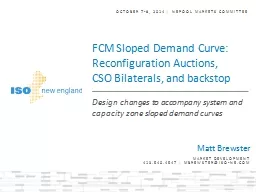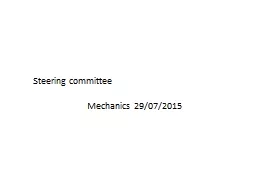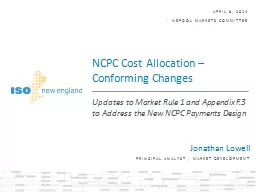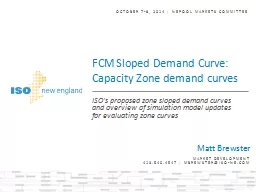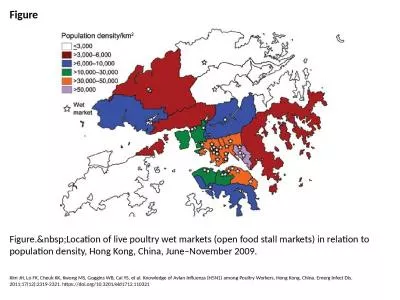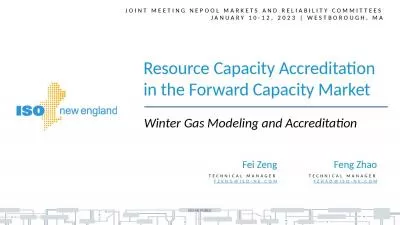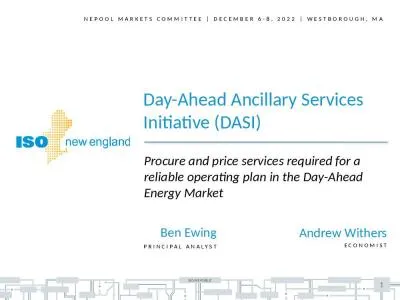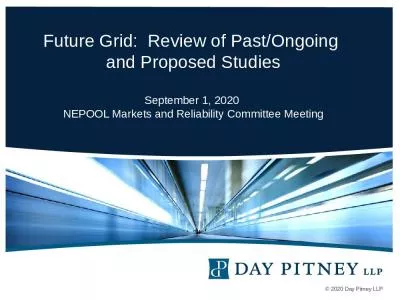PPT-September 2-3, 2015 | NEPOOL Markets Committee
Author : PrettyLittlething | Published Date : 2022-07-27
Ryan McCarthy rYMCCARTHYisonecom 4135354071 Discuss Forward Reserve Heat Rate calculation methodology Forward Reserve Heat Rate Calculation 2 Forward Reserve Threshold
Presentation Embed Code
Download Presentation
Download Presentation The PPT/PDF document "September 2-3, 2015 | NEPOOL Markets Com..." is the property of its rightful owner. Permission is granted to download and print the materials on this website for personal, non-commercial use only, and to display it on your personal computer provided you do not modify the materials and that you retain all copyright notices contained in the materials. By downloading content from our website, you accept the terms of this agreement.
September 2-3, 2015 | NEPOOL Markets Committee: Transcript
Download Rules Of Document
"September 2-3, 2015 | NEPOOL Markets Committee"The content belongs to its owner. You may download and print it for personal use, without modification, and keep all copyright notices. By downloading, you agree to these terms.
Related Documents

